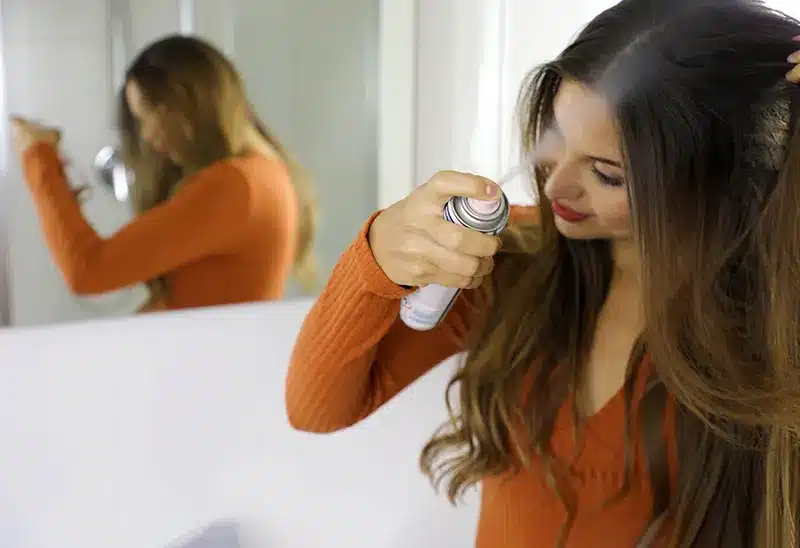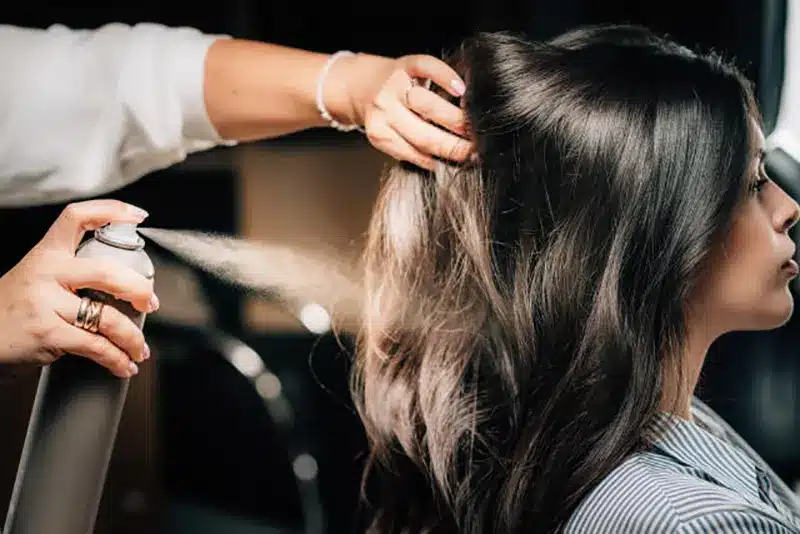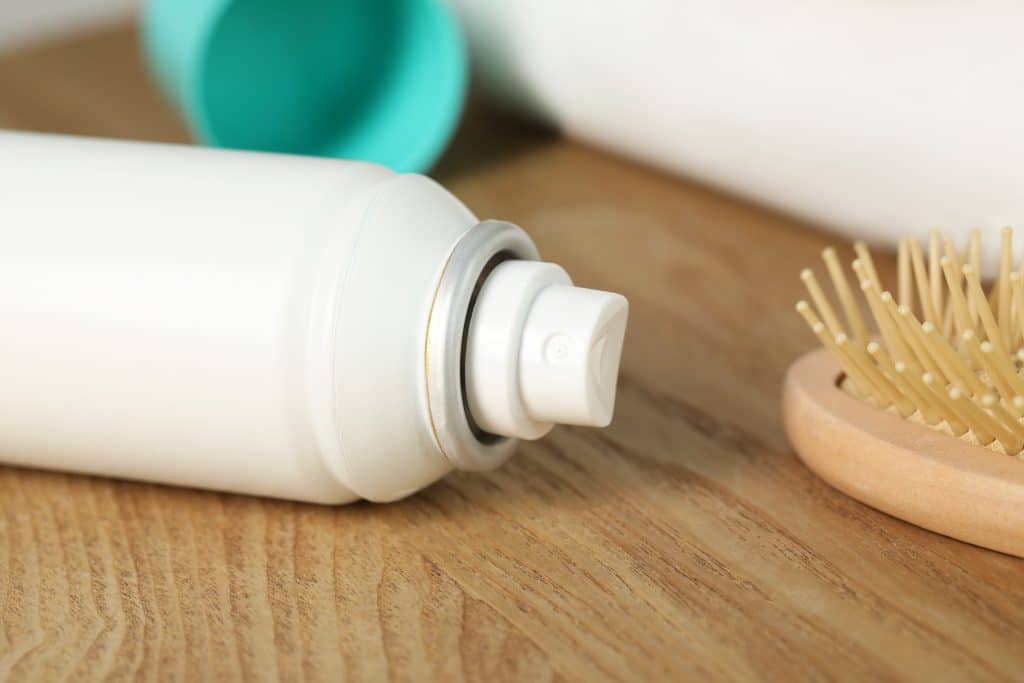When it comes to beauty and efficiency, dry shampoo is your go-to hair product. But does this convenience comes with risks? More importantly, can dry shampoo cause hair loss?
Excessive dry shampooing can lead to hair loss. When you use too much dry shampoo, the product buildup clogs your hair follicles and restricts hair growth. This can also result in several other hair issues such as poor scalp health and hair breakage.
However, dry shampoo isn’t a threat when used in moderation. Here’s a quick guide on how to properly use it and what other safe options you could switch to when things go awry.
How Does Dry Shampoo Cause Hair Loss

Using too much dry shampoo leads to poor scalp health which, according to studies, can cause hair loss. Thus, you could say it’s more of a contributor rather than a cause.
Unlike wet shampoos, you don’t rinse dry shampoo. So, the product just sits on your scalp until you wash your hair. The product buildup causes scalp inflammation that speeds up hair shedding, putting you at risk for bald spots. Yikes.
The same buildup also causes hair follicles to stick together. And when it does, chances are that when one falls off, it takes a few extra strands with it. Furthermore, clogged hair follicles also hinders normal hair growth.
Here are other scalp problems caused by excessive dry shampoos:
Dry Hair
Alcohol is a key component found in aerosol hair products like dry shampoo. This ingredient can make your hair dry and brittle. Having dry hair will eventually lead to breakage during hair styling and combing.
Scaly Scalp
Dry shampoo is known to absorb excess oil in your hair. But without regular shampooing, you’re just leaving the same oils in your scalp for days. An oily scalp can cause dandruff and worse, seborrheic dermatitis.
Bacterial or Fungal Infection
Besides inflammation, dry shampoo buildup can also cause hair follicle infections such as folliculitis.
Is Hair Loss from Dry Shampoo Permanent?
Both scalp itching and hair loss caused by dry shampoo overuse is temporary and reversible. According to Medical News Today, allergic reactions caused by hair care products are often mild and treatable with allergy creams and medications prescribed by a healthcare professional.
However, some cases might require medical attention. Reach out to your doctor when any of these symptoms persist:
- Sudden hair fall
- Formation of bald spots
- Large amount of hair fall
- Severe burning and itching of scalp
How to Use Dry Shampoo Properly

Now, dry shampoo does not always cause hair damage. In fact, it has its own share of benefits that makes it as popular as it is right now.
On top of that list is, of course, convenience. Dry shampoo is the ultimate time-saving solution for people constantly on the go. It lets you keep that nice, clean look without anybody ever knowing that you skipped the shower this morning.
Dry shampoos also let you tone down your wet-washing sessions, without your hair looking super oily. Many dermatologists discourage daily washing, so dry shampoo helps a lot for people with a dry hair type.
Not sure how to use dry shampoo? Here are some tips that will get you the best results:
- Use only once or twice a week at most
Never apply too much product for days straight as this will only cause unwanted buildup. Instead, give it a couple of days to breathe before your next application.
- Spray from at least 4 to 6 inches away from your head
Spraying too close to the scalp will concentrate the product on only one section of your hair. Not to mention, the direct application might cause allergic reactions. Instead, shake well before use and spray 4 to 6 inches away from your head in a sweeping motion. This way, you can apply the product in a thin and even layer.
- Pick the right tone that matches your hair color
Dry shampoos have light and dark tones. Always pick the right tone for your hair to avoid awkward, discolored casts on your hair.
- Don’t apply too much product
Only apply dry shampoo on the greasiest areas, which is around the top of your head. Remember, dry shampoos are meant to absorb excess oils, so spraying it on non-oily areas will make your hair drier.
- Massage product onto your scalp
After spraying, let the product sit for a few minutes before working it into your hair. You can do so by massaging or combing it through. Doing this will also get rid of that white residue from the application.
Safer Alternatives to Dry Shampoo

Dry shampoo should never replace regular shampoo as it is never meant to cleanse hair in the first place. What they do is simply soak up oils to achieve that freshly washed hair look even without water.
Giving up dry shampooing can be a struggle, especially for people with oily hair. However, if you’re experiencing hair loss because of it, then it might be time to switch to a safer option.
Fortunately, there are a lot of other alternatives you can use in place of dry shampoos. Most of them can easily be found in your kitchen, and are a lot safer and cheaper!
- Cornstarch and Cocoa Powder
These two natural oil-removing ingredients are best for darker hair tones. The cocoa gives your hair a nice scent and helps the cornstarch match your hair color.
- Apple Cider Vinegar
An all-natural hair treatment for all types of hair. Dilute with water and spray it onto your hair and voila! You now have a healthier dry shampoo.
- Dry Clay
Absorbs oils from your hair, making it look nice and fresh all day. For better results, you can combine it with milk powder.
- Oatmeal
Use a blender to powderize your oatmeal. Then, mix one part of oatmeal powder with one part of baking to create a natural oil absorber.
There are a lot of hair serums that are meant to strengthen your hair follicles and reduce oil. So instead of dry shampoo, you can go look for an oil-absorbing hair serum!
Conclusion

Healthy hair starts with a healthy scalp. Although dry shampoo isn’t the root cause of hair loss, uncontrolled usage can still negatively affect your hair in many ways. For one, it can clog up your scalp, cause breakage, and put you at risk for hair follicle infections.
So what should you do? Use it in moderation. There’s no need to quit dry shampooing as long as you’re doing it correctly. Just make sure that when things get too bad, seek help and don’t be afraid to switch to healthier alternatives. And if you’re thinking of going back to regular shampoo, remember to check for any harmful chemical like Sodium Laureth Sulfate.
The healthier the hair, the better!







